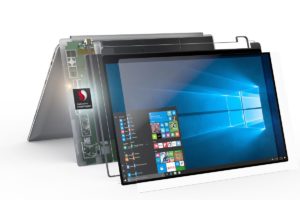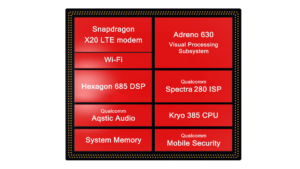- Published on
RISC Vs. CISC
- Authors
- Name
- Sam Mark
- @Twitter/smmk

Snapdragon’s new 850 processor is looking to slowly take over the windows productivity users. As i was talking about in the computex 2018 post Qualcomm is looking to create super energy efficient laptops. This brings up a very interesting debate and possible peek into the future of PCs. So a RISC or reduced instruction set computer works kind of like what it sounds like where the computer uses less complex processes of computing cycles to solve and problem. Where as CISC per cycle has much more complex cycles. Back when intel first release the x86 architecture this was a revolution in computing because the chip integrated complex processes into 8 bit architecture. This allow cpus to run on less ram but perform just as well. An oversimplified example of this is a programer would say to a CISC type cpu “open door A”, whereas in a RISC type CPU he would have to say something like “Grab DoorHand A; Twist DoorHandle A; Open Door A;”. These extra instructions would take up more memory and cost more, whereas a CISC CPU knows in it instruction set to grab and twist the door handle therefore only need a short instruction. But for many years we relied on the x86 architecture for our PC needs. And many of the productivity software and programs are based on the x86 architecture. This was fine because we weren’t worried about all the power it took for the x86 to process grabbing/twisting door handles. But as we enter and age where portability and energy efficiency are becoming more important we are looking to RISC to reduce the size and heat in our devices. Which brings me to Snapdragon 850 and the rumored Snapdragon 1000.
The Snapdragon series of processor are Qualcomm’s all in one package from cell phones and tablets. They use ARM’s RISC style architecture and also put many of the modern hardware modules onto one chip. Like in the Snapdragon 845 the have packaged in wifi, cellular data, GPU, system memory, and audio processor, security cryptographic processor, a processor for camera enhancements, and a processor for enhance instructions. They hold about 40% market share in the android market. Also they are the de facto chips for flagship phones. It makes sense that they are trying to push into the productivity market many folks already use their phone and tablets for work often paring a table with a bluetooth keyboard to work outside of the office.
So why don’t we use RISC processors in our PCs now that we have memory to spare. Well there are some roadblocks, but RISC architecture is slowly overcoming them. Of the issue was that RISC runs slower for many modern computational tasks because it doesn’t have the twist instructions built in. Many times to do complex float point complex integer math it could have a co-processor, and this would cause delays as packets of computing were moved back and forth between these to processors. Also many of the programs we use on windows would have to be rewritten to perform efficiently on RISC processors. But these are just roadblocks next i’ll look deeper into new and emerging devices that will probably replace laptops in the next few years.

